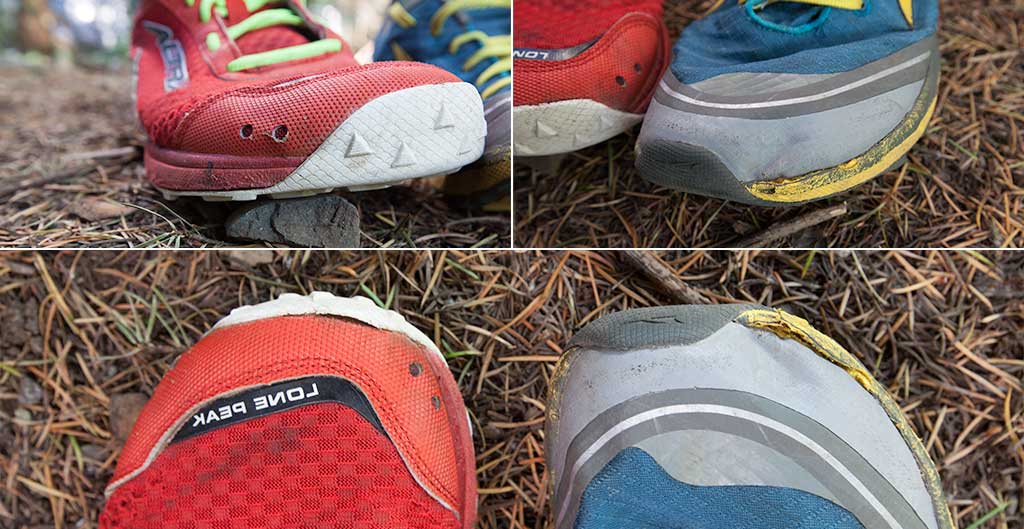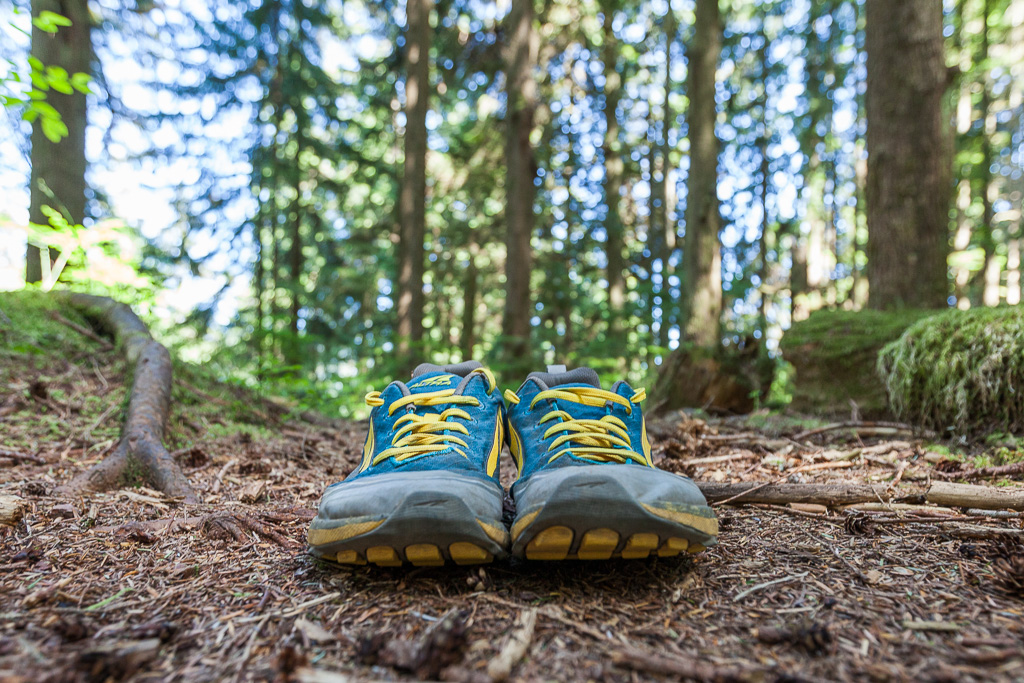Gear Review: Altra Superior 2.0
Updated June 24, 2015. Altra Lone Peak 1.5 has been my shoe of choice for some time, but now that the supplies are close to non-existent and my own stash is dwindling, it is time to look for a replacement shoe. Lone Peak 2.0 would be the obvious choice, but I didn’t feel as comfortable in them as I did in the 1.5 (the toe-off doesn’t feel right). I decided to try out the Superior 2.0, as I’ve used Superior 1.5 for “everything” shoe including some short runs, and generally liked it, aside from the lack of any sort of lugs. Heads up: As a big Lone Peak 1.5 fan, my review might be a little biased and somewhat of a comparison between the two shoes.
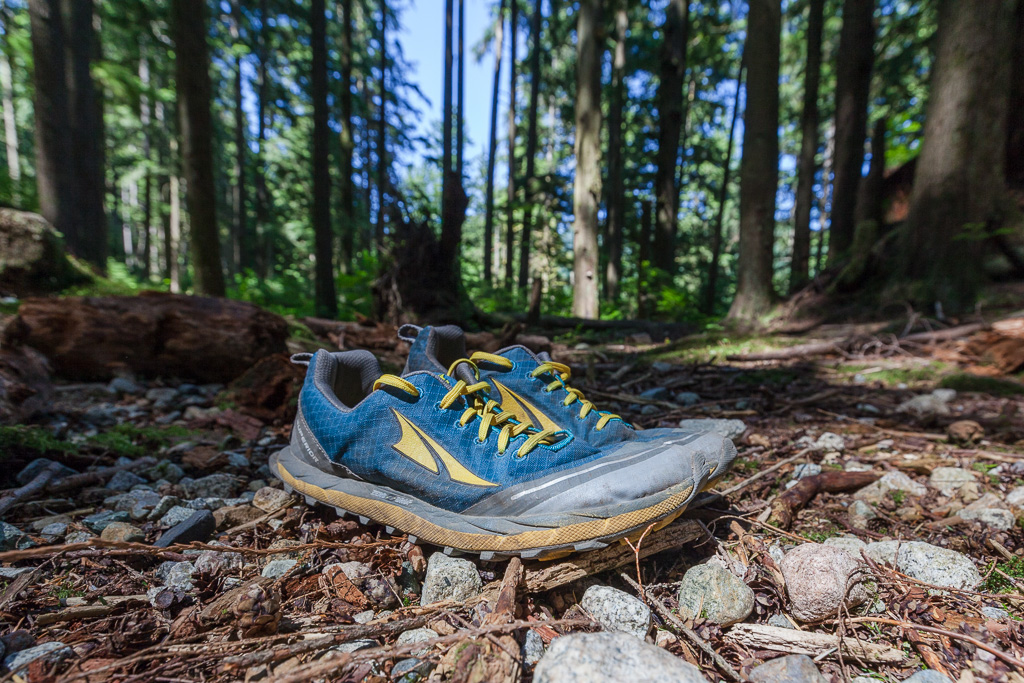
First thing you’ll notice is the sizing. All Altra shoes I’ve worn previously were size 10 and fit perfectly. With the Superior 2.0, I had to go up to 11 (no pun intended). It seems things went wrong in production and the shoe sizes are off, so don’t worry if you feel like you need to go up in size.
Upper
The upper was completely revamped. Gone is the mesh of Superior or Lone Peak, replaced by a densely woven fabric. It seems very soft and flexible, which should make it more resilient around the high wear areas (inside and outside at the ball of feet, for me). It should also cut down on the amount of dirt and dust entering the shoe. So far I haven’t noticed any major breathability issues, but the warmest weather isn’t here yet, so time will tell. I suspect the shoe will be somewhat warmer compared to its predecessor or Lone Peak 1.5. The toe bumper is now a “rubbery” compound painted along the front of the shoe, rather than the beefy piece of thick material that it used to be. It’s better than nothing, but I prefer a more beefier toe bumper.
Whatever you do, don’t get these shoes wet. I’ve dunked them at a creek crossing, and the water was squishing and splashing around my shoes for a good half hour, at which point I gave up, stopped, and poured the remaining water out of the shoes. After the run, it took about two days for the shoes to dry completely. For comparison, the Lone Peak 1.5 seems to drain water almost immediately. I’ve never had water slosh in them for more than a few of steps, even after crossing creeks when the shoes get completely submerged for longer period of time (or running ankle deep in ocean - thanks Rainshadow!). This seems to be related to construction of the new upper, which has about half inch wide rubbery strip where the upper meets the midsole (on the inside of the shoe). This may prevent water entering the shoe in puddles, but also prevents water from exiting the shoe when water comes in through the top. The cushier insoles may add to the problem as well.

After a few runs, I started noticing the shoe was tighter around my small toes. I fill out the Lone Peak 1.5 toe box comfortably (just enough space), and the toe box on Superior 1.5 was even better fit, as the shoe was shaped slightly differently around the small toe. It’s not unbearable or uncomfortable, but there is a noticeable difference. It could be that because of the flexible upper, there is less space above the toes. It was suggested to me to try and run in the shoe without the insole, but I haven’t had the chance to try this out yet.
Midsole
Speaking of the insole, they seem little cushier than the Lone Peak 1.5, but I can’t say it’s that noticeable. What is different, and to me seems like a design issue, is the perforation of the insole. I’m not sure what the intended purpose was, but when small rocks enter the shoe, rather than roll to the front of the shoe or to the side (I never had to remove rocks from the Lone Peak 1.5 mid run), the rocks and debris get caught in the perforation, right where it’s the least comfortable. When it gets bad enough and the shoe comes off, you can’t simply shake the debris out. You have to pry it out from the perforation or take the insole out and then fight with stuffing it into the shoe (which is no easy task, due to the anti-slip treatment of the shoe base and the insole).
Like the Superior 1.5, the shoe comes with a removable rock plate that goes under the insole. I find it makes the shoe considerably more stiff, and removes a lot of the ground feel that you otherwise get.
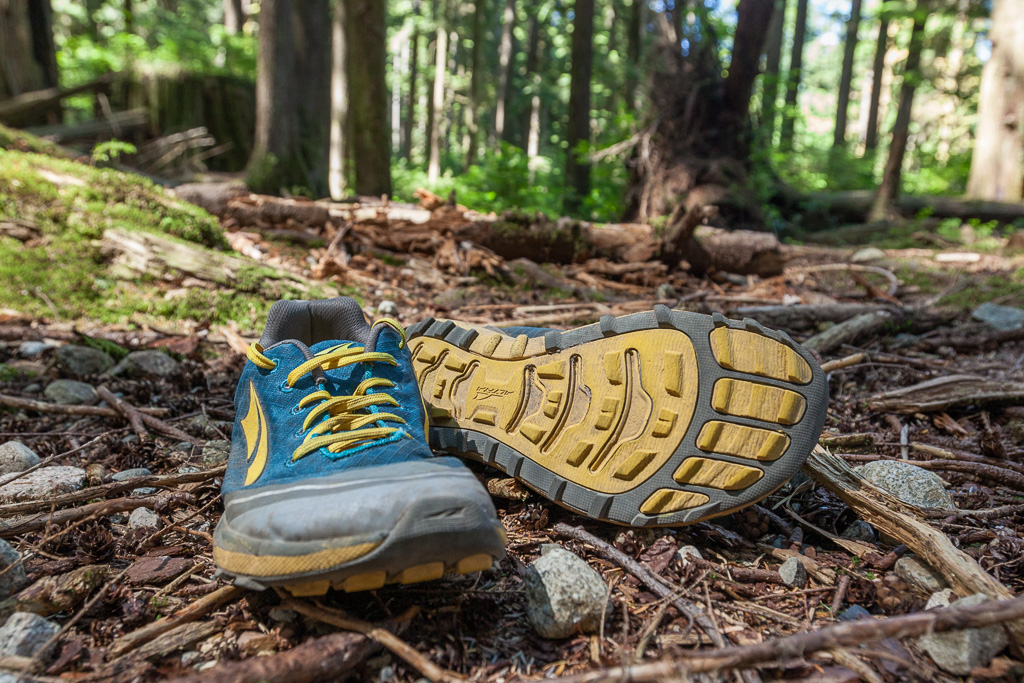
Outsole
The biggest difference from Lone Peak 1.5 and Superior 1.5 is addition of a slight rocker. Even though I wasn’t sure about it initially, I do notice the difference on downhills and later in the runs when my feet get more tired.
Compared to the Superior 1.5, the 2.0 has mountainous lugs. Superior 1.5 was essentially a “flat” shoe without almost anything at all to grip with. The rubber is stickier than either Lone Peak 1.5 or Superior 1.5, however because of the lug pattern on the Superior 2.0, it is very prone to lateral slipping on wet roots or pointy rocks. The even lug pattern (lugs arranged in rows) creates perfect “channels” and guides the shoe to slip along laterally. In this sense, the offset lug pattern on the Lone Peak 1.5 was more preferable, though overall, I like the Superior 2.0 outsole.
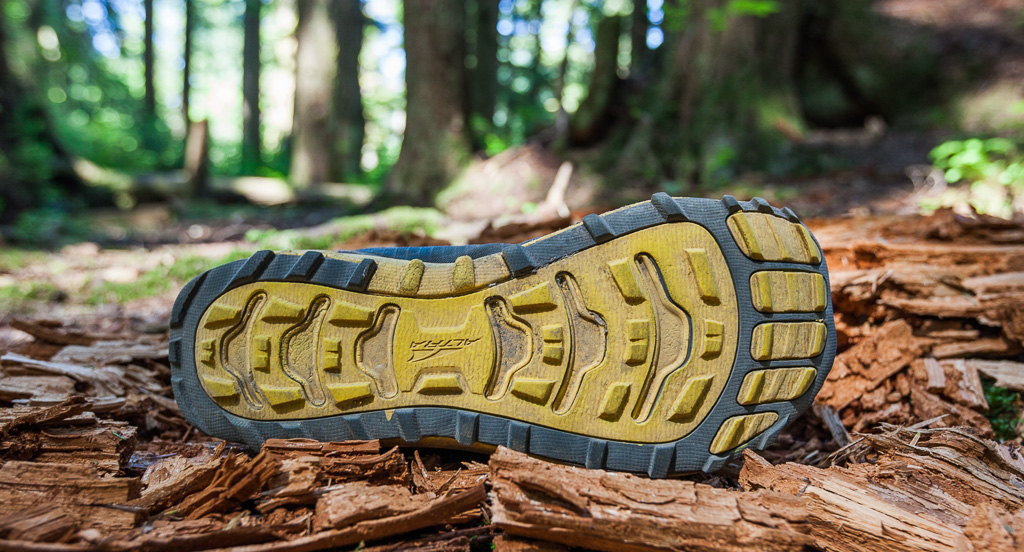
Last but not least, I’ve never liked the “rudder” and always cut it off, as it tends to do more harm than good (for eg. wedging between heel and rock on steep downhills with tight footing). While it has been significantly downsized on the Superior 2.0, it still protrudes. Unfortunately Altra also made it thicker, and it just became harder to cut off, but not impossible.
Bottom line
Overall, this is a great upgrade to the Superior line, and the shoe feels much more like Lone Peak 1.5 than the previous Superior. While a few things need to be addressed, I feel like this will be my next go-to shoe and I’ll start mixing it in as my fleet of Lone Peak 1.5 slowly disintegrates.
June 24, 2015 Update
Having ran more technical trails in the shoes, the rudder has to go. On multiple occasions, it caught on roots enough to pull the shoe off my foot; not very cool. In the previous incarnation of the shoe, and on the Lone Peak 1.5, the rudder was more flexible, so in cases like these it would just bend. Now that it’s stiffer, it holds.
I also have wonder about the toe bumpers. The softer and more stickier rubber is exposed here and the toes catch a little more than I’d like. The painted on bumper (light gray) isn’t very durable, doesn’t seem to do much, and is already wearing off. Here is a detail shot of the toes on Lone Peak 1.5 after about 600+km vs. toes on Superior 2.0 after about 150 km.
